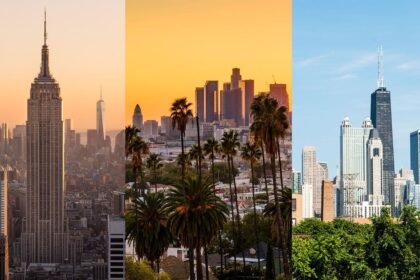Discover why wild venison can be a climate-friendly swap for beef. Learn how culling, methane emissions, and local hunting practices make venison a sustainable protein option.
Why Wild Venison is a Climate-Friendly Choice
Seven years ago, I decided to reduce my meat consumption. While my family enjoyed a final steak dinner before flying home to Costa Rica, I marked it as my farewell to a diet rich in red meat. Since then, my meals have been mostly vegetarian, with occasional seafood or a carefully chosen animal product that has a lower environmental impact.
This change came from covering the climate crisis. Foods like mussels or other low-carbon options still appear on my plate regularly. But high-carbon meats, such as beef and pork, are rare indulgences, reserved for festive occasions or nostalgic cravings.
For me, eating sustainably isn’t about eliminating meat entirely, but about reducing emissions tied to food choices. That approach has been challenged and reshaped since I moved to Scotland—where venison has become part of the sustainability debate.
Deer Populations and the Case for Sustainable Venison
Scotland is home to nearly a million wild deer, almost double the number recorded in 1990. With natural predators such as wolves and lynx long gone, deer populations have expanded unchecked, leading to overgrazing and damage to woodlands.
To protect ecosystems, government agencies and landowners cull deer annually. This creates a surplus of wild venison—raising the question: could eating this meat actually help the climate?
Wild Venison Climate-Friendly: Carbon Footprint Compared to Beef
Beef is one of the most carbon-intensive foods, responsible for about 5% of global greenhouse gas emissions. Cattle farming drives deforestation, releases large amounts of methane, and requires significant resources for grazing and feed production.
Producing 100 grams of protein from beef releases an average of 25kg of CO2 equivalent (CO2e). In contrast:
- Peas: 0.4kg CO2e
- Tofu: 1.6kg CO2e
- Chicken: 4.3kg CO2e
- Pork: 6.5kg CO2e
Where does wild venison fit in?
A 2024 study commissioned in Scotland estimated that 100 grams of protein from wild venison results in 11.9kg of CO2e. This is significantly lower than beef but higher than chicken and pork.
Wild Venison Climate-Friendly? The Methane Debate
The high footprint for venison comes mainly from methane produced by deer. As ruminants, they digest food in multiple stomach chambers, releasing methane just like cows. But here’s the key debate: should we count methane from wild deer toward the carbon cost of venison?
Unlike cattle, wild deer are not bred for human consumption. They would produce methane regardless of whether they are culled. Many experts argue that since venison is a byproduct of necessary culling, its methane should not be treated the same as livestock emissions.
If methane from wild deer is excluded, venison’s footprint drops dramatically—making it more sustainable than beef, chicken, and pork.
Hunting Efficiency Matters
Another factor influencing venison’s climate impact is the efficiency of hunters. Studies show that travel fuel for hunters accounts for up to 90% of venison’s non-methane emissions.
For example, in one case study, many hunters traveled long distances but failed to cull any deer. If fewer, more skilled hunters covered the same territory, the carbon footprint of venison could be cut nearly in half.
This raises important questions: should hunting licenses prioritize skilled shooters, or should more training be offered to reduce unnecessary travel and emissions?
Limits of Scaling Venison Consumption
Even if every deer in Scotland were culled, venison could only provide a fraction of the country’s total meat demand. Similar studies in the US found that all wild game harvested nationally made up only about 3% of total meat calories consumed. wild venison climate-friendly.
This means venison cannot replace industrial meat at scale. Instead, it works best as a local, niche, climate-conscious alternative where deer overpopulation is already a problem.
Venison and Forest Carbon Storage
Beyond emissions, deer heavily influence carbon storage in forests. They browse on seedlings and saplings, slowing woodland regeneration and reducing the ability of forests to capture and store carbon.
In Scotland, deer impact was recorded on up to 20% of young trees. Managing deer numbers through culling improves forest health, which in turn boosts carbon sequestration. Eating the venison generated by these culls supports ongoing woodland recovery efforts.
Can Venison Become a Mainstream Choice?
Challenges remain before wild venison can be widely adopted. Price, availability, and unfamiliarity in cooking prevent many households from choosing it over more common meats.
Yet, experts argue that encouraging venison consumption can reduce waste from culling programs and provide a lower-carbon meat option. For those unwilling to give up meat altogether, venison offers a compromise—satisfying taste preferences while aligning more closely with climate goals. wild venison climate-friendly.
Conclusion: A Pragmatic Climate-Friendly Swap
Wild venison is not a magic solution for the global meat industry. But in regions like Scotland, where deer overpopulation damages ecosystems, it represents a practical, lower-carbon swap for beef.





Fantastic awesome interesting wonderful cool strange superb fantastic.